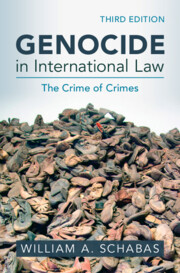Book contents
- Genocide in International Law
- Genocide in International Law
- Copyright page
- Dedication
- Contents
- Preface to the First Edition
- Acknowledgements
- Abbreviations
- Introduction
- 1 Origins of the Legal Prohibition of Genocide
- 2 Drafting of the Genocide Convention
- 3 Subsequent Normative Developments
- 4 Groups Protected by the Convention
- 5 The Specific Intent to Commit Genocide
- 6 Punishable Acts of Genocide
- 7 Cultural Genocide, Ethnic Cleansing and Other Acts Not Punishable under the Convention
- 8 ‘Other Acts’ of Genocide
- 9 Defences to Genocide
- 10 The Duty to Punish Genocide
- 11 Prosecution of Genocide by International Criminal Tribunals
- 12 State Responsibility and the Role of the International Court of Justice
- 13 Prevention of Genocide
- 14 Activity of International Organizations
- 15 Treaty Law Questions and the Convention
- Conclusions
- Bibliography
- Index
5 - The Specific Intent to Commit Genocide
Published online by Cambridge University Press: 14 March 2025
- Genocide in International Law
- Genocide in International Law
- Copyright page
- Dedication
- Contents
- Preface to the First Edition
- Acknowledgements
- Abbreviations
- Introduction
- 1 Origins of the Legal Prohibition of Genocide
- 2 Drafting of the Genocide Convention
- 3 Subsequent Normative Developments
- 4 Groups Protected by the Convention
- 5 The Specific Intent to Commit Genocide
- 6 Punishable Acts of Genocide
- 7 Cultural Genocide, Ethnic Cleansing and Other Acts Not Punishable under the Convention
- 8 ‘Other Acts’ of Genocide
- 9 Defences to Genocide
- 10 The Duty to Punish Genocide
- 11 Prosecution of Genocide by International Criminal Tribunals
- 12 State Responsibility and the Role of the International Court of Justice
- 13 Prevention of Genocide
- 14 Activity of International Organizations
- 15 Treaty Law Questions and the Convention
- Conclusions
- Bibliography
- Index
Summary
The definition of genocide in the 1948 Convention requires that at least one of the punishable acts listed in the paragraphs of article II be committed with the specific intent or dolus specialis to destroy the protected group. This high threshold is often difficutl to prove, notably when the evidence of intent is essentially circumstantial and based upon infererences drawn from a pattern of conduct. International courts and tribunals have taken the view that this intent must be to destroy the group physically, rejecting an approach whereby it is sufficient to deprive the group of its culture, its language or its ancestral territory. The definition accepts that the intended destruction be ’in whole or in part’, to which case law has added the requirement that this be a ’substantial part’. The words ’as such’ conclude the definitiion; they have been considered to point to a requirement of racist or discriminatory motive.
Keywords
- Type
- Chapter
- Information
- Genocide in International LawThe Crime of Crimes, pp. 213 - 278Publisher: Cambridge University PressPrint publication year: 2025

